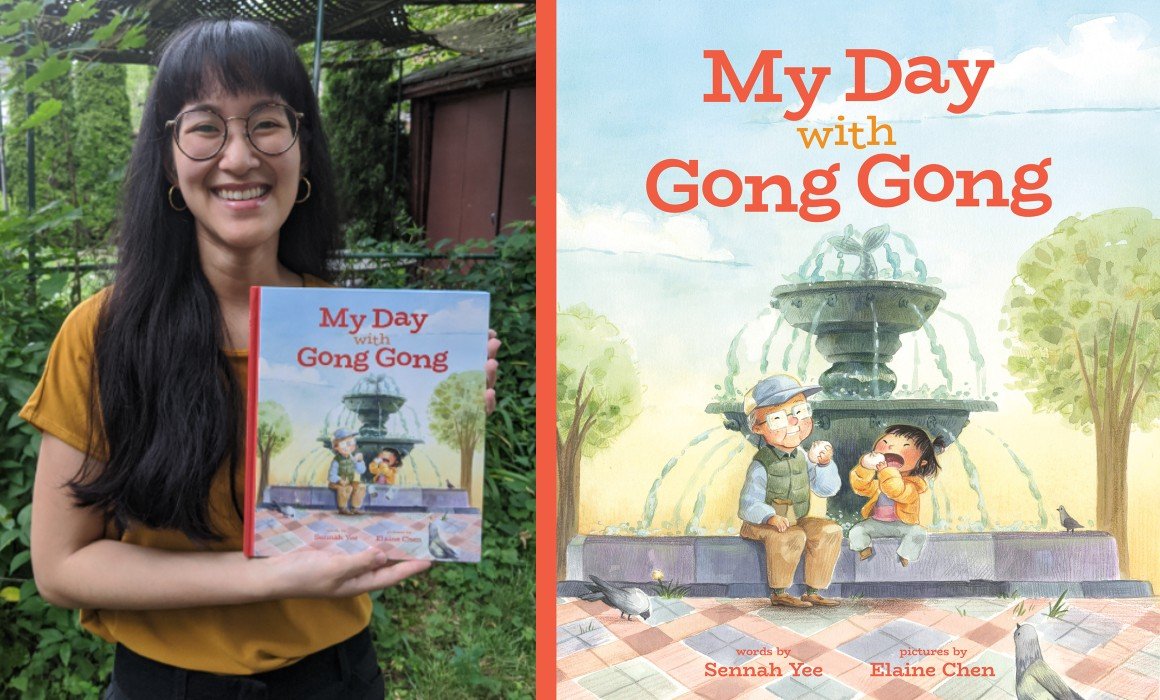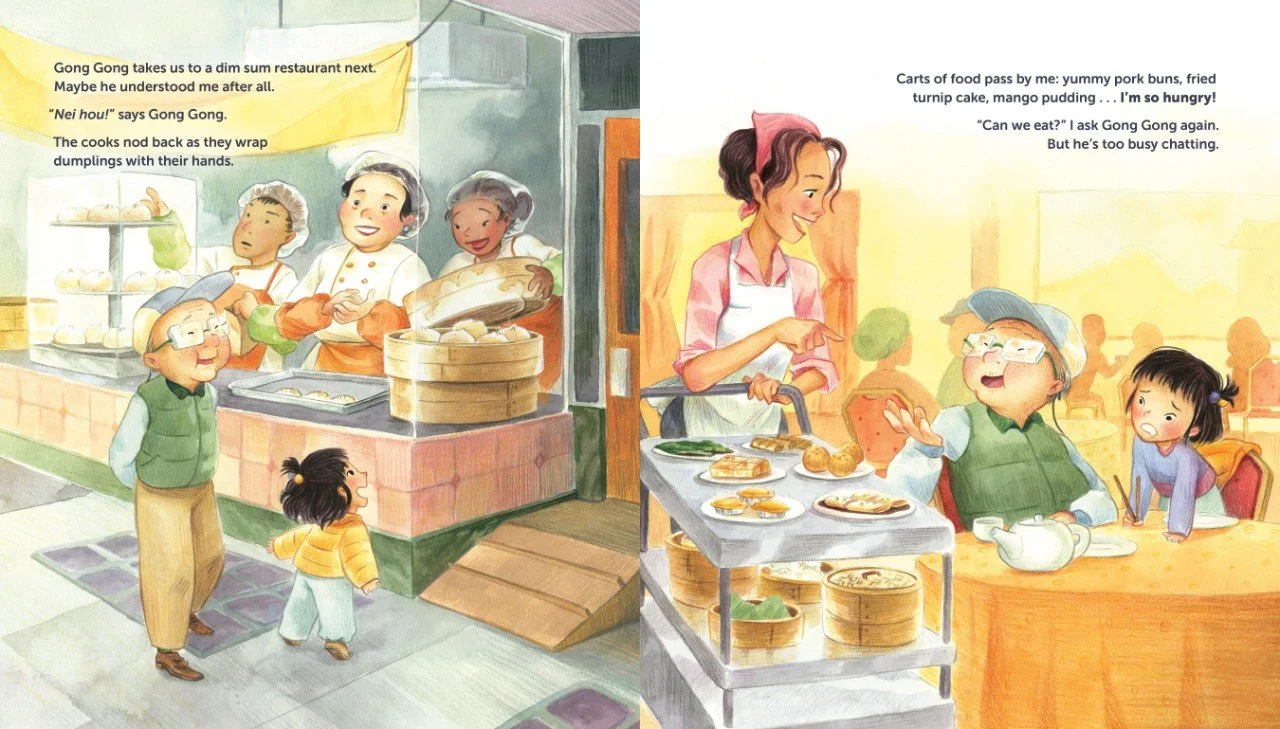Sennah Yee’s ‘My Day With Gong Gong’ Beautifully Captures the Nuances of Intergenerational Relationships
The children’s book shows how love can overcome language barriers, as well as cultural and generational differences.
Photo: Courtesy Sennah Yee, Annick Press.
For many first and second generation Asian Canadians, a disconnect is often felt with elders and grandparents due to cultural and language barriers. We often lack the luxury of having meaningful conversations with these loved ones, and displays of love and affection appear different than those of our non-Asian peers’ families.
Sennah Yee knows this struggle all too well. Growing up, the Chinese-Canadian author had difficulty communicating with both her maternal and paternal grandparents and felt envious she couldn’t connect with them as easily as her friends.
“It’s so complicated. I remember being a kid and feeling kind of embarrassed that I didn’t understand [my grandparents], but also sad,” Yee tells The RepresentASIAN Project. “I felt a disconnect and it made me feel sad that I could’t connect with my grandparents the same way that I knew some of my friends could [with] one-on-one hangouts or long phone calls, and I was almost kind of jealous.”
This sense of yearning for connection and intergenerational understanding is the basis for Yee’s debut children’s book, My Day With Gong Gong. The picture book, illustrated by Elaine Chen, is a love letter to Yee’s grandfather (whom she affectionally called, “Gongie”) and tells the story of a young Chinese-Canadian girl named May who goes to Chinatown with her grandfather, Gong Gong. The trip starts off with many misinterpretations (Gong Gong is not fluent in English and May has a minimal understanding of Cantonese), leaving May frustrated that her grandfather doesn’t understand her feelings. However, later on, May realizes that Gong Gong understands and cares for her a lot more than he let on, and May looks upon her surroundings with a renewed appreciation.
“It was important for me to write a story so other kids who are going through the same thing can know feeling that way is normal and okay,” Yee explains. “I remember feeling kind of shameful or guilty, and I still feel that today, but I’m trying to understand that that’s totally normal and that there are other ways to connect with your loved ones and that language is only one of many ways you can show love.”
Photo: Courtesy Annick Press.
One tender moment in the book demonstrates the love language familiar to many Asians: food. After May reaches a breaking point, Gong Gong presents her with a pork bun he saved from a trip to the dim sum restaurant earlier.
For Yee, it was important to include these familiar little nuances that the young Asian audience could relate to, especially since she lacked representation in the media as a child.
“I think I really underestimated the importance of [representation] as a kid because there was so little to go off of that I almost didn’t realize that I was missing it,” she says. “But even just seeing one story of someone who can look like you or someone who has a slightly similar experience to you, it’s so validating. You feel understood in a way.”
“When you’re a kid, it’s hard to gain meaning or an understanding about yourself and the world…[especially] when you’re being presented with stereotypes or just only one version,” she continues. “Even if that version in itself is authentic to that story, it’s just one that you’re seeing over and over again, it can be hard to feel seen.”
“Even just seeing one story of someone who can look like you or someone who has a slightly similar experience to you, it’s so validating. You feel understood in a way.”
To Yee, having the story take place in Chinatown was also of great importance. Her own mother grew in up Toronto’s Chinatown, and Yee had fond memories of visiting her Gong Gong at her mother’s childhood home as a kid. But while Chinatown was often a place of excitement for Yee, she also felt a disconnect while there as she couldn’t speak the language.
“I wanted to touch upon the simultaneous feelings of distance and belonging as a Chinese-Canadian child visiting Chinatown,” she explains. “I remember feeling a little nervous sometimes in Chinatown, because I’d sometimes I’d greeted in Chinese or asked questions and I wouldn’t know how to respond. But I also remember feeling pure joy at all the familiar faces, foods, smells, and objects that reminded me of my family.”
And while the book was just released September 8th, the feedback Yee has received has already been excellent.
“It’s been so special talking with people and how they’ll share it with kids in their lives, and [hearing] how they’re thinking about their own grandparents,” she says. “Even just being able to contribute a drop in the bucket to the kinds of stories that I hope can be more frequent…it feels great.”


